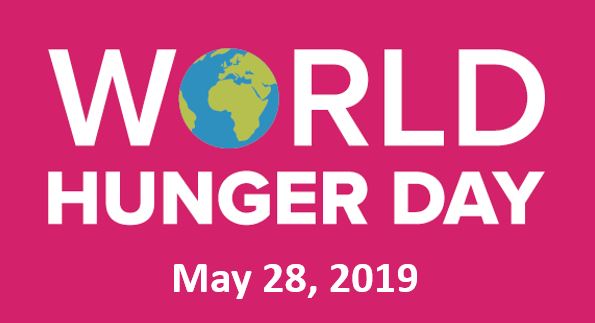Today, May 28, is World Hunger Day 2019, an initiative by The Hunger Project. According to their website:
- More than 821 million people do not have enough food to eat.
- 60 percent of the world’s hungry are women.
- 98 percent of the world’s undernourished live in developing countries.
- Hunger kills more than Aids, Malaria and Tuberculosis combined.
The Hunger Project is focused on solving a number of issues associated with food. Their view, according to their website, is that:
Hunger is not just about food. Hunger and poverty are inextricably linked to a nexus of issues including: decent work opportunities, health, education, social justice, the rights of women and girls, the environment and climate change. The Hunger Project uses an innovative, holistic approach that tackles all these issues, and empowers people living in hunger to become the agents of their own development and lift their communities above the poverty line for good – this is the sustainable end of poverty.
Even though they state that 98 percent of the world’s undernourished live in developing countries, hunger is a huge problem here in the United States. According to Feeding America:
- 40 million people struggle with hunger in the United States, including more than 12 million children.
- A household that is food insecure has limited or uncertain access to enough food to support a healthy life.
- Children are more likely to face food insecurity than any other group in the United States.
- 58% of food-insecure households participated in at least one of the major federal food assistance program.
The Theme for This Year’s World Hunger Day is Sustainability.
One section on the World Hunger Day website asks, “What does sustainability mean to you?” At Zest Labs, we’re focused on reducing fresh food waste as one component of addressing the sustainability problem. We believe that improving sustainability by preventing waste has environmental, social and economic benefits:
- Environmental: In addition reducing the amount of food we waste, we no longer waste any of the resources used to produce, process and ship produce and proteins. When we waste 40% of the food produced, that’s also wasting the water, energy, land, labor and fertilizers that go into production, shipping, refrigerating and storing. And, the wasted food ends up in landfills and contributes eight percent of our greenhouse gas emissions. That, in turn, accelerates climate change which impacts our ability to produce food and is often most deleterious to the poor in developing nations.
- Social: The less food we waste, the more people we can feed with the same agricultural outputs.
- Economic: Costs go down, product margins go up for the grower, the shipper and the retailer. When you reduce food waste, you actually can make sustainability profitable.
Feeding a Growing Population
We need to produce more food using increasingly dwindling resources to feed a global population that’s expected to grow to 10 billion people by 2050. We clearly need to change how we do things as we cannot continue down this path of converting more and more land to agriculture.
According to the World Bank, just over 37 percent of the Earth’s surface is used for agriculture. Further removal of forests promotes accelerated climate change. This impacts everyone but ultimately the poor and the underdeveloped countries most severely.
What Can We Do to Support World Hunger Day?
There are a number of things each of us can do to help feed more people and support the initiatives of World Hunger Day.
Reduce food waste: We can reduce food waste in a number of ways. We can be better shoppers and doing a better job of buying only what we can consume. I know that I’m guilty of buying too much food and am doing my best to do a better job by planning my meals better.
With improved freshness management, we can also ensure that the food we produce is delivered with sufficient freshness for consumption so that it doesn’t spoil in the supply chain, at the store or restaurant, or in our refrigerators.
Support or Mandate Food Redistribution: Even if we improve freshness management across the supply chain, ultimately some food still goes to waste. Instead of sending that to landfills, we can use improved supply chain and freshness management solutions to improve the ability of grocery stores and restaurants to get unused food to food banks before it spoils. Software solutions – combined with IoT-based data – can provide alerts to grocers about food that is still fresh but has only limited shelf-life. This food – which would otherwise spoil at the store or with the consumer – can be identified, pulled and shipped to food banks that can quickly distribute it to people who can consume it while it is still fresh.
Grocery store chains, such as Kroger with their Zero Hunger | Zero Waste program, are stepping up to ensure food can be consumed rather than wasted. In fact, France has made it illegal for grocery stores to throw away food.
Support World Hunger Day and/or Your Local Food Bank
You can also donate time, food and funds to support World Hunger Day, your local food banks (check Feeding America’s find a local foodbank page) and organizations like ReFED. Donations for World Hunger Day and The Hunger Project are accepted related to various countries, including the United States. I encourage you to make a donation to World Hunger Day 2019 today, I did.


